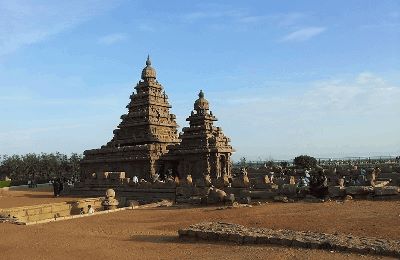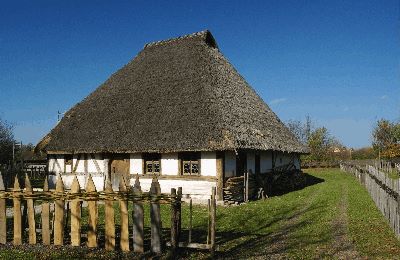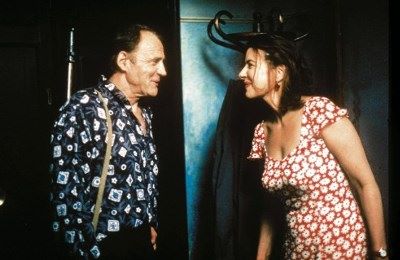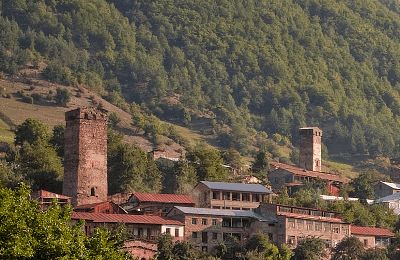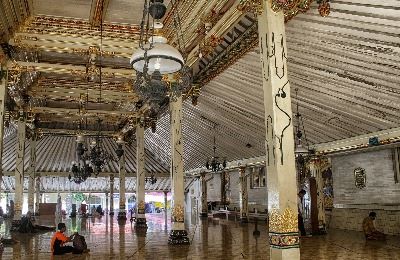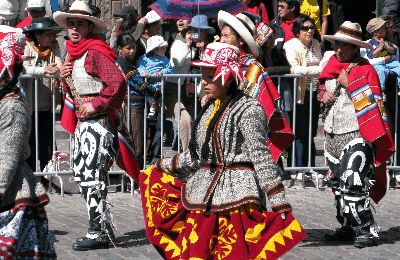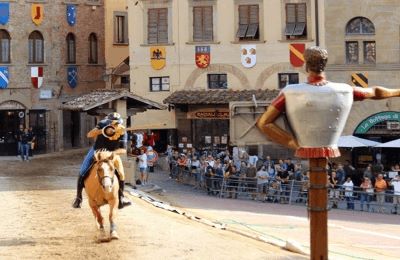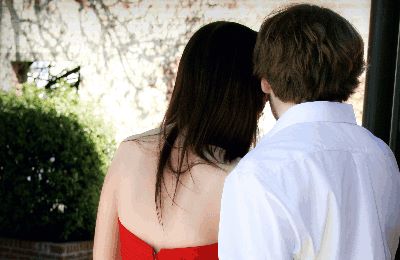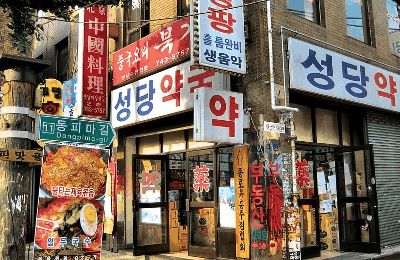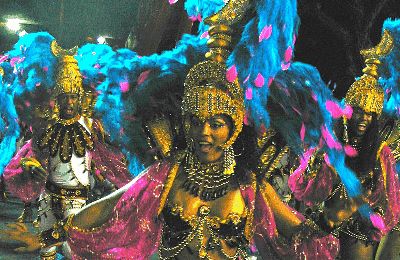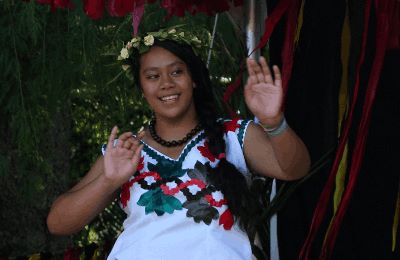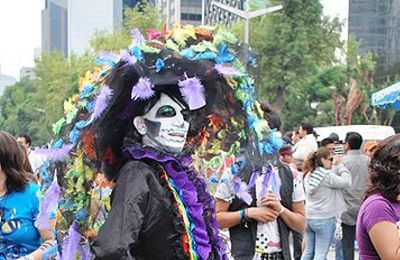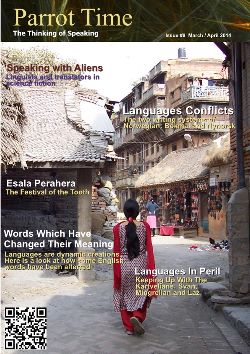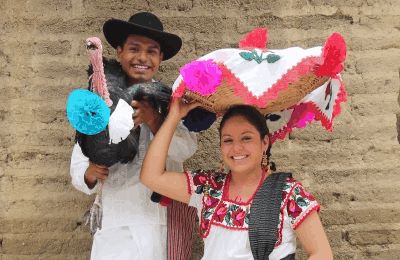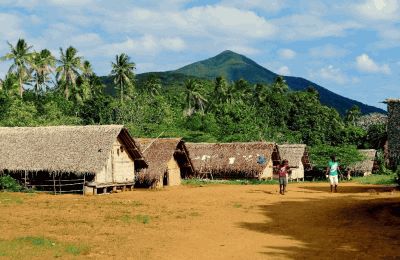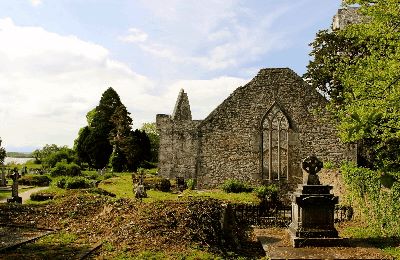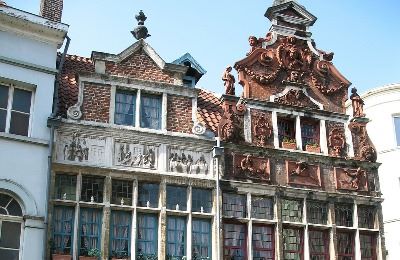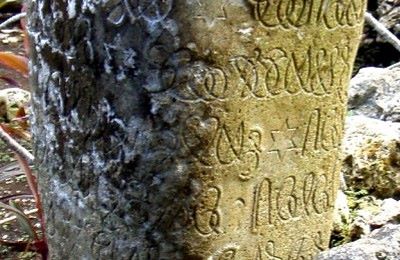Esala Perahera - The Festival of the Tooth

|
There are many celebrations that involve parades and processions. These are normally done to draw the attention of a large group of people. A few festivals, however, actually have their sole purpose being to present something in parade. The Esala Perahera is one of them. Every year, Sri Lanka has the Buddhist festival Esala Perahera, which translates to "The Festival of the Tooth", in July or August. More precisely, "perahera" is a Sinhalese word, referring to a procession of performers like musicians, dancers and acrobats, normally parading with decorated elephants for a religious event. Surprisingly, this is all to display a tooth. History 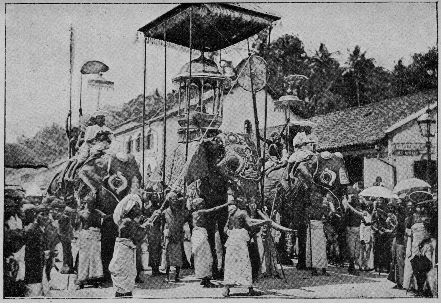 Sacred procession in Kandy from the book Vlas Mikhailovich Doroshevich «East and War» Actually, the Esala Perahera is a combination of two different historical celebrations. The first of these, the Dalada Perahera relates to the sacred tooth of Buddha. After the Buddha died, his body was cremated and seven remains were recovered from the ashes: four teeth and three bones. Burial mounds called stupas are used in the Buddhist religion to house the ashes of the dead, normally with the ashes divided up equally and distributed to eight different stupas. However, the salvaged remains were not sent with the ashes to be buried. What actually happened to all of them is not truly known. One of the teeth did find its way to King of Kalinga (an ancient kingdom of India) in the form of a gift. The King had the tooth place in a temple in the capital city of Dantapura, where it remained safe until the 4th century. At that time, the city fell under threat of war and so, to protect the tooth, it was sent to Ceylon, which became modern day Sri Lanka. The Esala Perahera is actually composed of five parades. The main one with the tooth is joined by a procession from each of the four shrines. The King of Ceylon, being a devout Buddhist himself, understood the significance of the tooth and had it placed in a temple in his own capital city. He also wished the tooth to be given all the honour it could have, so he decreed that each year, the tooth would be paraded through the streets of the city for the citizens to give it proper reverence. The other celebration was the Esala Perahera which was originally a water ritual, dating back to the 3rd century, performed to elicit rainfall from the gods. The tooth was not always allowed to be shown. Prior to the reign of Kandyan King Kirthi Sri Rajasinghe (1747–1781), the tooth was treated as private property of the King and no one else was allowed to see it. King Rajasinghe changed that, re-establishing the original decree and the modern version of Esala Perahera was born. Today 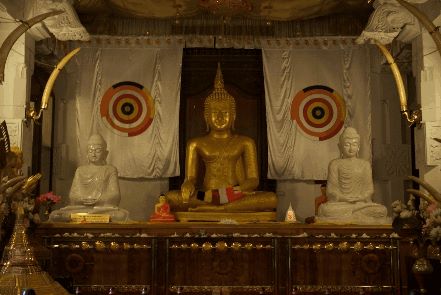 Buddha Statue, Temple of the Tooth Relic, Kandy, Sri Lanka The full name of the tooth is the "Sacred Tooth Relic of Buddha" and while there is so much talk of having it on display, it is actually kept in a series of seven miniature stupas, made of gold and coated in precious gemstones. Three times a day, monks perform rituals of respect and each Wednesday, the tooth is further washed in scented water. The celebration takes place over the course of ten days in Kandy, which has the significance of being the second largest city in Sri Lanka, but more importantly, it was the last capital of the ancient kings of Sri Lanka. The exact date of the festival is shifted each year so that it ends on a full moon. Everything starts with a ceremonial cutting of a young Jackfruit tree. Pieces from the tree are planted at the shrines, called devales, of the four Buddhist guardian gods of Natha, Vishnu, Katharagama and Pattini. This was done historically as a means of obtaining blessings for the King and his people. After this, for the first five nights, various celebrations involving elaborate dancing and drumming are held outside of each of the shrines, with each night becoming increasingly more grand. 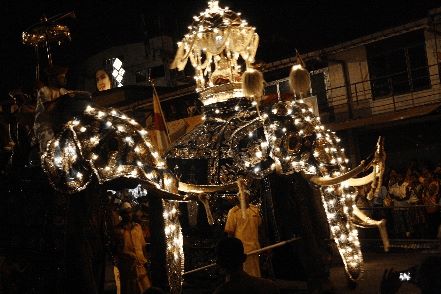 Decorated elephants. One of them is the Maligawa Tusker which carries a replica of the tooth. On the sixth night, the processions begins. The Esala Perahera is actually composed of five parades. The main one with the tooth is joined by a procession from each of the four shrines. First is the Devale Peraheras, which starts at the Temple of the Tooth, the most important Buddhist shrine in Sri Lanka. For the procession, the tooth isn't actually used. A replica of it is used instead, being carried in a fine casket and carried on the back of a decorated elephant, called the Maligawa Tusker. Performers cracking whips and acrobats wielding fire clear the way for the parade, and they are followed by flag bearers. The first elephant bears the Peramuna Rala ("Front Official"), which is then followed by dancers and drummers who entertain the audience. More elephants, dancers and musicians follow. After them come the white clothed singers who announce the arrival of the Maligawa Tusker. Finally comes the _Diyawadana Nilame+, who is historically given the responsibility of making sure that rain from the gods come during the right season. The other four parades come from the four devales and join with the main Devale Peraheras. The first to join is from the Natha Devale. This shrine is believed to be the oldest, built even before the tooth was brought to Kandy. It is given the honor of coming in second place. Vishnu Devale follows next. Vishnu is a Hindu god and, besides being one of Sri Lanka's Guardians, also represents the crossover from Hindu to Buddhist beliefs. Next comes Katharagama Devale, which is dedicated to the Hindu god of war, victory, love and wisdom, Skanda-Murukan. A notable part of this parade is the peacock dance, so called because of the semicircular wooden devices, decorated by peacock feathers, which the dancers bear on their shoulders. The last procession is from the Pattini Devale, which is devoted to the goddess of health and fertility, Pattini. This is the only parade which allows women to dance. 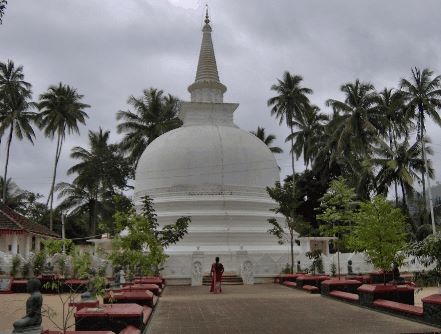 Buddhist stupa in Sri Lanka This grand parade happens for five nights, and on each one, each procession, full of its own dancers, performers and musicians, becomes larger and grander. On the final night, the largest and most spectacular procession continues all night. It all ends after the full moon at dawn, when priests from all four devales walk to the Mahaweli River, the longest river in Sri Lanka, wade out into it, then use a sword to "cut" a large circle. They then fill several pitchers from water within the circle and keep the water in the shrine for entire next year. This final action is similar to some water purification rituals in other cultural celebrations. PT |
| Celebrations - Esala Perahera | ||||||||||
| Writer: | Sonja Krüger | |||||||||
| Images: | ||||||||||
| ||||||||||
| Sources: | ||||||||||
| ||||||||||
All images are Copyright - CC BY-SA (Creative Commons Share Alike) by their respective owners, except for Petey, which is Public Domain (PD) or unless otherwise noted.
|
Searching for language resources? Scriveremo Publishing, has lots of fun books and resource to help you learn a language. Click the link below to see our selection of books, availlable for over 30 langauges!
| |
comments powered by Disqus

